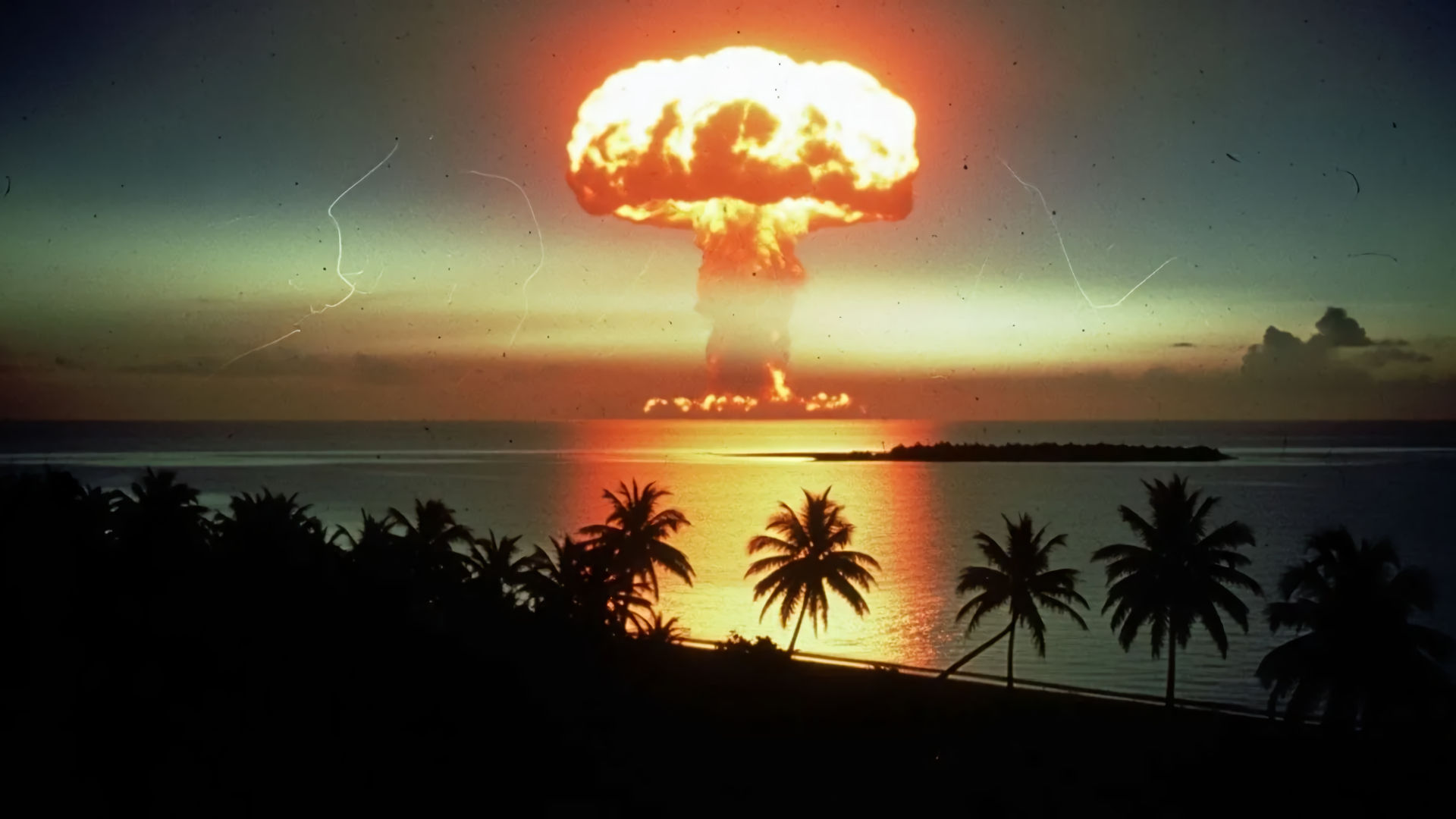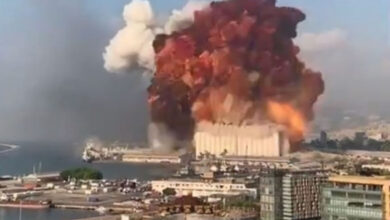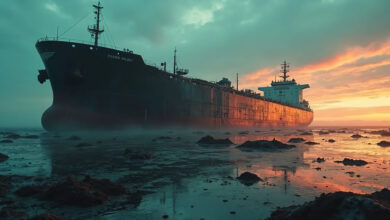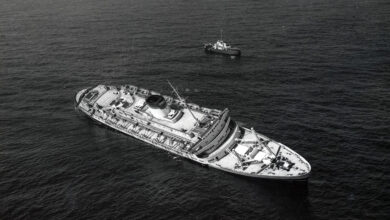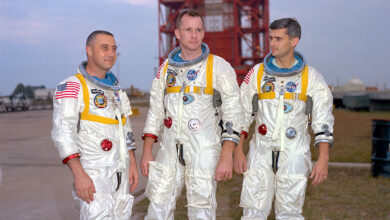The Castle Bravo Disaster
1 March 1954 began the same as any other day in the U.S. nuclear testing programme, with a series of experiments oriented to pushing the boundaries of thermonuclear weapon design. But at Bikini Atoll in the Marshall Islands, one detonation would exceed every expectation. The test code-named Castle Bravo unleashed a yield far greater than predicted, triggering radioactive fallout over inhabited islands, contaminating nearby populations, including U.S. service members, and sparking international outrage over the dangers of atmospheric nuclear testing.
Castle Bravo was part of Operation Castle, a sequence of high-yield nuclear tests intended to validate new “dry fuel” thermonuclear designs, simpler, lighter, more deliverable weapons. The device used in Bravo, nicknamed “Shrimp,” relied on lithium deuteride as the fusion fuel, with a portion of lithium‑7 isotope assumed inert under neutron bombardment. Scientists expected a yield of about 6 megatons. Instead, the device detonated at 15 megatons, more than twice the predicted strength. The miscalculation stemmed from unanticipated nuclear reactions involving the lithium-7, which contributed additional fusion and fission energy beyond design.
The Blast and the Cloud
At 6:45 a.m. local time, Bravo detonated on a barge above Bikini lagoon. The explosion vaporised coral, sand, water, and the entirety of the test island’s surface. A towering fireball rose, expanding into a mushroom cloud that climbed tens of thousands of feet. Winds carried pulverised coral dust and radioactive debris across a swath of ocean and islands. An immense crater formed in the lagoon, leaving a footprint tens of kilometres across.
But the actual danger came hours later, when the fallout began to descend. Wind shifts and weather patterns carried radioactive dust beyond planned exclusion zones. Isolated islands, once thought safe, suddenly found themselves showered in fallout. Among the worst hit were Rongelap and Utrik atolls, whose inhabitants experienced acute radiation sickness, hair loss, skin burns, nausea, vomiting, and extreme fatigue.
Innocent Victims: Islanders and Fishermen
Many of the impacted were Marshallese Islanders who had not been entirely evacuated before the test. Within days, they were relocated to safer atolls, but only after radiation exposure had already begun. In later years, many of them suffered long-term health effects: thyroid problems, cancers, birth defects, and other radiation-linked illnesses.
Another notorious case involved a Japanese fishing vessel, Daigo Fukuryū Maru (Lucky Dragon No. 5). The ship had been well outside the declared danger zone, but unexpectedly drifted into the fallout plume. The crew was exposed, with 23 men suffering radiation sickness. Tragically, one of them, Aikichi Kuboyama, died months later of complications. That incident provoked widespread Japanese public and diplomatic backlash against U.S. nuclear testing.
The Fallout Legacy and Health Impact
Much of Bravo’s damage was silent: radiation does not announce itself. Fallout contamination affected soil and water, entering the food chain through fish, coconut, and crops. Radioisotopes such as cesium‑137 and strontium‑90 lingered in the environment for decades, increasing cancer risks, especially thyroid cancer and leukaemia.
A significant outcome of Bravo was that it exposed the dangers of assumptions in weapon design. The underestimated yield meant the test centre was inadequately prepared for fallout. Many of the instruments, diagnostics, and protections intended to be in place were overwhelmed or destroyed by the blast. Some instruments meant to measure the explosion were vaporised.
Political Fallout and Global Reaction
International condemnation followed swiftly. The test reignited debates over atmospheric testing and nuclear proliferation. Countries and anti-nuclear movements used the Bravo disaster as evidence that thermonuclear weapons testing was too dangerous. The incident contributed momentum toward the Partial Test Ban Treaty of 1963, which prohibited nuclear tests in the atmosphere, outer space, and underwater.
Domestically in the U.S., the unexpected fallout raised questions about oversight, accountability, and the balance between national security and human welfare. The test revealed that even among scientists, assumptions such as “some isotopes are inert” can be catastrophically wrong. Subsequent test planning became more cautious, with greater scrutiny of wind conditions, weather models, and environmental effects.
Evacuations, Compensation, and Displacement
In the days after Bravo, inhabitants of severely contaminated islands were evacuated, sometimes belatedly and under poor conditions. Many were relocated to islands already used by U.S. forces or others. Over time, compensation mechanisms were introduced. The U.S. government established the Nuclear Claims Tribunal, awarding compensation to Marshallese claimants and others affected by contamination. By 1995, it had awarded roughly US$43.2 million to over a thousand claimants.
Still, compensation could not erase cultural trauma, disrupted livelihoods, and loss of ancestral lands. Some islanders have refused to return to contaminated atolls. Debate endures over whether compensation is adequate or just.
Scientific Insights and Precautions
Castle Bravo became a milestone in nuclear science, showing how small isotopic assumptions could lead to massive errors in yield prediction. It forced more robust modelling, better instrument design, and stricter safety margins. Because Bravo so far exceeded its predicted yield, the data it produced reshaped the understanding of fusion yields and neutron flux.
It also served as a case study in radiological health physics, fallout dispersion modelling, and long-term epidemiological tracking. Researchers monitored exposed populations and correlated radiation doses with later illness rates, providing essential data on the effects of nuclear testing.
Cultural Memory and Legacy
The impact of Castle Bravo rippled far beyond science. Marshall Islanders internalised it as a symbol of colonial injustice. Their voices amplified calls for nuclear justice, compensation, and recognition. Activist groups, Indigenous communities, and international bodies made Bravo a cautionary tale, not just of power, but of disregard for human life and environmental vulnerability.
Art, writing, film, and memorials keep the memory alive. Researchers and survivors continue to press for transparency, health studies, and environmental cleanup. The Bravo disaster remains central to Marshallese identity and their ongoing struggle for equitable treatment.
Why Castle Bravo Still Matters
Castle Bravo is not just a Cold War relic. It is a warning: that technology without humility can have deadly consequences; that remote islands and small populations can become unwilling victims of policies conceived far away. It reminds us that science must respect uncertainty and invisible dangers. The fallout legacy, including health issues, displacement, and contaminated land, lingers decades later. In an era where nuclear risk is again part of geopolitical discussion, Bravo’s lessons are not historical footnotes but urgent reminders. No weapon is without consequence. No assumption should go unchecked. And every test, no matter how “controlled,” carries potential for disaster.
The Castle Bravo Disaster FAQ
Castle Bravo was a U.S. hydrogen bomb test conducted on March 1, 1954, at Bikini Atoll in the Marshall Islands. It was the most powerful nuclear device ever detonated by the U.S.
The test yielded more than twice the expected explosive power, spreading radioactive fallout over populated islands and even reaching a Japanese fishing boat, causing widespread radiation sickness.
Marshallese islanders, U.S. military personnel, and the Japanese fishing crew aboard the Lucky Dragon No. 5 were among those exposed to dangerous radiation levels.
The incident contributed to global criticism of atmospheric nuclear testing and helped pave the way for the Partial Test Ban Treaty of 1963.


